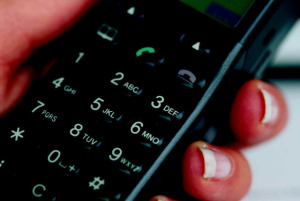Home-based technology decreases hospitalization, mortality
by
Heather Mayer, DOTmed News Reporter | August 09, 2010

Study found health
benefits to telephone
and telemonitoring from
home.
Access to remote monitoring, whether by telephone or telemonitoring systems, reduces deaths and hospitalizations in patients with chronic heart failure, according to findings published Saturday in Cochrane Database of Systematic Reviews. These technological systems may also provide patients with better health care costs and a better quality of life, the Australian researchers found.
"The aim of these interventions is to improve patient outcomes," lead researcher Dr. Sally Inglis of IDI Heart and Diabetes Institute said in an e-mail interview with DOTmed News. "Like many chronic health conditions, heart failure causes considerable impact on quality of life, as well as being the cause of frequent hospitalization and shortened life expectancy."
The researchers defined structured telephone support as monitoring or self-care management through telephone technology. In other words, patients would relay health information, such as signs and symptoms of heart problems and body weight, to health care professionals. Patients who used telemonitoring programs relayed this information to health care professionals using various digital technologies and connections including broadband, wireless, satellite and Bluetooth.
"By monitoring the condition of patients in their own home on a regular basis, it may be possible to identify when the patient's condition is deteriorating," Inglis said. "In some instances, this can be addressed by changes to lifestyle or medications and, in turn, may avoid the patient having to be hospitalized."
The researchers looked at more than 9,500 patients and compared both types of technologies to usual care for patients with chronic heart failure. Patients who had "intensified" specialist follow-up were excluded to avoid skewing the results, the report said. Of patients in the telemonitoring group, 102 per 1,000 patients died in the telemonitoring group compared to 154 per 1,000 in the control group. No significant benefit was seen in the telephone group.
Both the telemonitoring and telephone groups showed a reduced number of patients admitted to hospitals due to worsening heart failure - 164 per 1,000 patients in the telephone group were hospitalized compared to 213 per 1,000 in the control group. And 225 patients per 1,000 were hospitalized in the telemonitoring group compared to 284 per 1,000 in the control group.
"It appears that these interventions may reduce the frequency of hospitalization and for telemonitoring, reduce mortality," explained Inglis.
Whether these technology systems are cost-effective has yet to be seen. But reducing expensive hospitalizations will reduce costs. The researchers concluded that they need more information to determine the cost-effectiveness of these interventions.
"These findings are important because chronic heart failure is common, especially in older-aged individuals, and leads to frequent hospitalization, shortens life-expectancy and reduces quality of life," said Inglis.
The researchers did not study the security of patients' personal information when it comes to telemonitoring and telephone reporting.
Using technology to help manage this condition will allow limited health care resources to reach all patients, the researchers noted.
"These interventions may facilitate provision of specialized heart failure monitoring and education to a greater number of patients over a wider geographical area," Inglis said.
